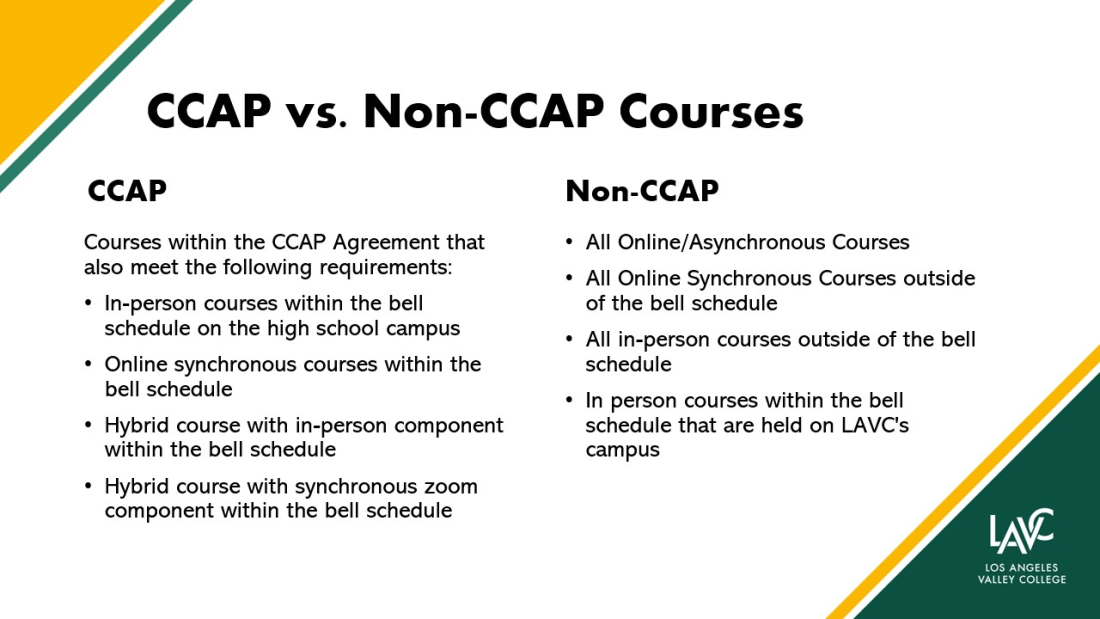Dual Enrollment FAQs
FREQUENTLY ASKED QUESTIONS
For Students and Families
Where will Dual Enrollment classes take place? Most LAVC Dual enrollment courses take place at the student's high school, during the school day. Some courses are also taught online or in a hybrid format.
How is the course work different from a regular high school class? It's important to keep in mind that Dual Enrollment courses are college courses. While our course instructors participate in training to redesign courses to enhance Dual Enrollment students' success, please be aware that your student will still be covering college-level content. Final grades received in a Dual Enrollment class will be recorded on an official Los Angeles Valley College transcript. For these reasons, it is important to recognize the commitment a student is making before enrolling in a Dual Enrollment course.
Are LAVC credits transferable? Many Los Angeles Valley College credits are transferable to UC and CSU schools, as well as some private universities and colleges. You may visit assist.org to check on transferability to schools outside of the UC or CSU systems. Check the LAVC Catalog or speak with a counselor for specific details about transferability.
How many courses may I take? This joint initiative of the California Community Colleges Chancellor's Office and the California Department of Education allows high school students to dual enroll in up to 15 community college units per term; students may enroll in no more than four courses per term.
Can I take college courses if my high school does not have a dual enrollment program or if my high school does not offer the courses that I'm interested in? Yes, you may enroll independently as a concurrently enrolled high school student in a non-dual enrollment course. Because you are a high school student, you must still follow the registration process for dual enrollment students (applying to the college, completing a K-12/dynamic form, etc.) Please refer to the Dual Enrollment Process Page for more information.
I am interested in participating. How can I get more information? Please contact your high school counselor to determine if your school is one of our dual enrollment partners.
For High School Administrators
Where are dual enrollment courses held? Most LAVC Dual enrollment courses take place at the student's high school, during the school day. Some courses are also taught online or in a hybrid format.
What is a CCAP agreement? The CCAP agreement is a joint initiative of the California Community Colleges Chancellor’s Office and the California Department of Education which allows high school students to dual enroll in up to 15 community college units per term; students may enroll in no more than four courses per term. Program goals are to develop seamless pathways from high school to community college for career technical education (CTE) or general education transfer, improve high school graduation rates, or help high school students achieve college and career readiness. Courses must be part of an academic program defined in a CCAP partnership agreement and meet criteria for both a high school diploma and an Associate of Arts or another credential.
The actual agreement outlines the terms of the CCAP partnership and includes the total number of high school students to be served and the total number of full-time equivalent students projected to be claimed by the community college district for those students; the scope, nature, time, location, and listing of community college courses to be offered; and criteria to assess the ability of students to benefit from those courses. The CCAP partnership agreement also establishes protocols for information sharing, in compliance with all applicable state and federal privacy laws, joint facilities use, and parental consent for high school pupils to enroll in community college courses.

Thank you for your interest in partnering with LAVC! Please contact us to schedule a meeting.